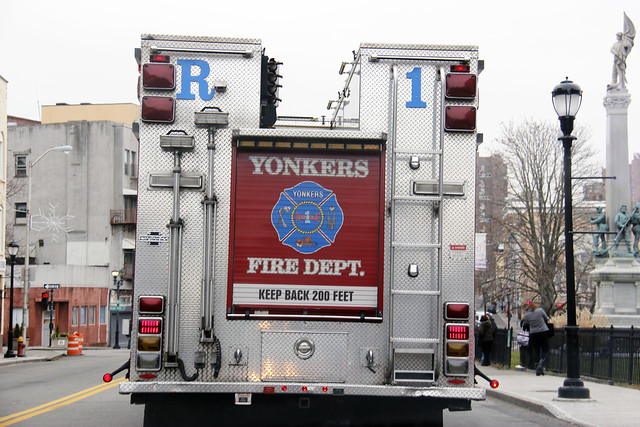
As reported in the New York Times, "After 27 Years, Yonkers Housing Desegregation Battle Ends Quietly in Manhattan Court," by Fernanda Santos, on 2 May 2007 -- The federal judge had been on the bench just over a year when the lawsuit first hit his docket; now he is semi-retired. The lawyer for the plaintiffs, now 53, was three years out of law school when he was assigned the case. And the current president of the Yonkers branch of the N.A.A.C.P., which filed the suit on behalf of poor blacks and Latinos living in segregated public housing, was still in her teens at the time the litigation began.
United States v. City of Yonkers, the landmark suit filed in 1980, not only cast Yonkers as a hotbed of racial intolerance and discrimination, it also defined a generation of local leaders and the careers of the lawyers and the judge involved.
Yesterday was the long-awaited finale, as Judge Leonard B. Sand of United States District Court in Manhattan signed off on the settlement agreement that officials in Yonkers and the local N.A.A.C.P. president, Karen Edmonson, approved two weeks ago. In announcing his decision, Judge Sand formally put an end to 27 years of often hostile litigation — a battle that turned out to be so costly it almost drove Yonkers into bankruptcy.
“When I think about the past 27 years, I like to think that, thanks to the efforts of many people, there are families in Yonkers who are living in decent, affordable housing,” Judge Sand said during the last public hearing on the case. “It was worth the effort.”
Judge Sand issued a 670-page ruling against Yonkers in 1985, and then ordered the city to build 200 units of public housing and set aside 600 homes for low-income families in the east side of town, which is mostly white and middle class.
In his ruling, the judge described in painstaking detail the segregationist policies that led Yonkers to concentrate most of its public housing units, 7,000 of them in all, in a one-square-mile swath in west Yonkers.
Construction of the last low-income homes is set for completion this summer, fulfilling the city’s obligation to the court.
“The city has demonstrated good faith and intends not to return to its old ways,” said Marilyn Melkonian, a housing official under President Jimmy Carter whom Judge Sand appointed in 1993 to monitor the city’s compliance with the court order.
The hearing, which lasted a little more than an hour, sounded at times like a farewell reception to a demanding but respected co-worker.
Civil Rights lawyer Michael Sussman of Chester
Michael Sussman, who represented the N.A.A.C.P. chapter throughout the case, thanked the judge for his diligence and said he sometimes viewed him as a father, who admonished him and encouraged him in equal measure and at the right time.
The city’s lawyer, Raymond P. Fitzpatrick Jr., who once won a Supreme Court case allowing white firefighters to challenge racial quotas in Birmingham, Ala., where his practice is based, thanked the judge as well, telling him it was a “privilege” to have argued a case before him.
“This case was contentious, it was difficult and it was challenging; it consumed me during most of the 1990s,” said Mr. Fitzpatrick, who has worked on the case for 17 years. “It kind of surprised me that it ended so quietly. The judge said he’d sign the agreement and it was over, that was it.”

There were subtle mentions of the arguments and protests unleashed by the lawsuit, both in and outside of court. During the most heated moments, when Yonkers officials were debating whether to acquiesce to the judge or fight his order in court, Mr. Sussman received death threats and demonstrators burned life-size cardboard cutouts of Judge Sand outside Yonkers City Hall.
“I never lost sleep over this because I knew I was doing the right thing,” Mr. Sussman said after the hearing.
As part of the settlement, Yonkers has agreed to maintain the 800 units of public and low-income housing for at least three decades after the units became available.
“The lesson I hope young people will draw from all of this is that you have to be tenacious and fight for what’s right, not just take what’s given to you,” Ms. Edmonson said. (source: New York Times,)


Yonkers was a beautiful, middle-class city until this ruling destroyed the city. Why anyone would be proud of destroying a city is mind boggling. Judge Sand and the naacp should be ashamed of themselves.
ReplyDeleteOnly someone who has not and does not live under vestiges of systemic controlled discrimination would say that the previously mentioned should be ashamed.
ReplyDeleteThe fact that the status quo would go on business as usual. That would also mean that the voiceless had not right to be heard and made better moving forward.
I don't agree with the way it was mapped out in it's entirely...... But it doesn't mean the same thing for people who were not generationaly impacted and affected.